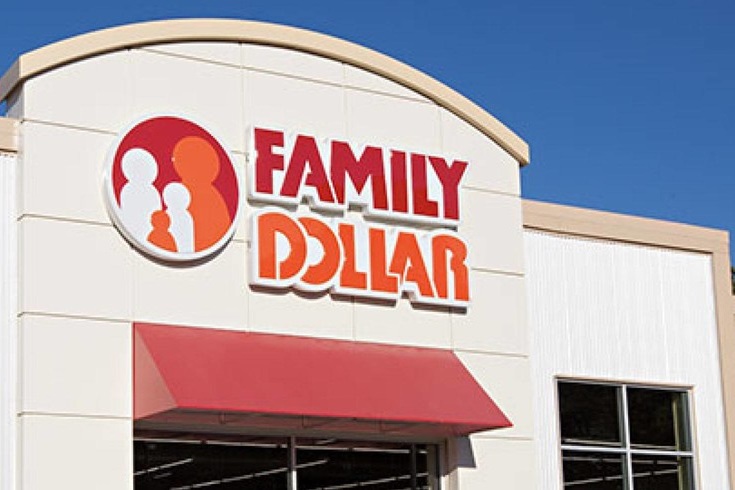
Shorter return windows and increased return mailing fees among new measures to lessen returns
Ever since the invention of retail stores, items being returned has been the biggest strain on profits for retail owners. Now in 2023, with continued inflation and the current worldwide economic crisis, fixing this problem is a top priority for many retail outlets.
Amazon has recently issued a statement to customers about products experiencing high return rates, while online retailer Dress the Population is now providing discounts to shoppers who agree to a no-return policy. Physical retail giants like H&M and Zara are also adopting new policies, like a charge for any returns sent by mail.
During the pandemic in particular, return rates skyrocketed as a large percentage of shoppers were forced to move to online shopping. Correspondingly, many people purchased several sizes of the same item for lack of being able to try items on or were unsure about the appearance of products without physically being able to see them before buying. As a result of examples like these, return rates in 2022 were almost 15% higher than what they were back in 2019. This inconvenience to retailers was further expounded by the cost of the shipping, warehousing, and labor needed to facilitate the returns.
Another consequence of these returns is that by the time they come back to retailers, many items are out of season and must be heavily marked down in order to be resold, which can further affect profits negatively.
It can cost up to $100 to process a returned item, according to industry experts. So, by reducing the amount of returns by half could potentially increase a company’s yearly profits by as much as 25%.
The plan to minimize returns is just one of many changes in the retail industry to facilitate a priority toward profit over growth. In recent years, the estimated worth of many online retailers has declined and revenue profits have diminished in the midst of inflation, rising interest rates, and other economic issues.
Due to the high cost of returns amongst other factors, tech companies such as Apple, Google, and others, have recently made changes to their operations that alter how shoppers are targeted and tracked as they browse and shop around the internet.
Up until recently, Amazon was known for its free and fast returns in the e-commerce space. Now though it is trying to subdue some of this service and has begun highlighting which items have a high return rate in their category. Amazon now also charges a fee of $1 to customers returning products through UPS, when there is an Amazon Fresh, Whole Foods, or Kohl’s store nearby. Amazon owns both Fresh and Whole Foods, and is partnered with Kohl’s department stores when it comes to processing returns. Amazon has stated that showing return rates on items is to help customers make more informed purchases. There are still several ‘free return’ options available and the $1 return charge only applies to a small number of customers overall.
According to survey studies, over 60% of retail branches now charge for returns, which is a more than 50% increase from this time last year. Almost 70% of shoppers stated they would stop shopping at retail stores that charged for returns, while 50% agreed they would pay more upfront if it meant free returns. Retail stores are now also limiting return periods and encouraging shoppers to return items to stores themselves. In light of this, more shoppers are physically returning online purchases to stores and the ‘in-store’ return rate has almost doubled in the last year.
For lack of a sound strategy to deal with the problem, some retailers have simply told customers to keep their unwanted goods, while others have offered discounts before purchasing if the customer promised not to return their purchase.
For retailer Dress the Population, which sells dresses both online and through retail stores such as Nordstrom and Saks Fifth Avenue, returns accounted for almost 50% and costs at least $25 to cover the processing and return shipping cost for each item sent back. To counteract this, the brand began offering customers a discount of anywhere between 10% to 70% if they agreed to keep the items they purchased. According to the brand, nearly 15% of customers have agreed to the discount, and this has reduced the overall return rate by around 7%, which in turn has reduced the cost of returns greatly.
It is believed that a small percentage of shoppers are responsible for the bulk of returns. According to one clothing retailer, a mere 8% of customers made up for more than 70% of their returns. Companies try their best to identify and monitor these serial returners so that don’t they are not rewarded for their behavior or take advantage of any deals or discounts. Marketers also hone in on this group because they tend to buy more, but overall are among the least profitable or worthwhile customers statistically.

Shorter return windows and increased return mailing fees among new measures to lessen returns
Ever since the invention of retail stores, items being returned has been the biggest strain on profits for retail owners. Now in 2023, with continued inflation and the current worldwide economic crisis, fixing this problem is a top priority for many retail outlets.
Amazon has recently issued a statement to customers about products experiencing high return rates, while online retailer Dress the Population is now providing discounts to shoppers who agree to a no-return policy. Physical retail giants like H&M and Zara are also adopting new policies, like a charge for any returns sent by mail.
During the pandemic in particular, return rates skyrocketed as a large percentage of shoppers were forced to move to online shopping. Correspondingly, many people purchased several sizes of the same item for lack of being able to try items on or were unsure about the appearance of products without physically being able to see them before buying. As a result of examples like these, return rates in 2022 were almost 15% higher than what they were back in 2019. This inconvenience to retailers was further expounded by the cost of the shipping, warehousing, and labor needed to facilitate the returns.
Another consequence of these returns is that by the time they come back to retailers, many items are out of season and must be heavily marked down in order to be resold, which can further affect profits negatively.
It can cost up to $100 to process a returned item, according to industry experts. So, by reducing the amount of returns by half could potentially increase a company’s yearly profits by as much as 25%.
The plan to minimize returns is just one of many changes in the retail industry to facilitate a priority toward profit over growth. In recent years, the estimated worth of many online retailers has declined and revenue profits have diminished in the midst of inflation, rising interest rates, and other economic issues.
Due to the high cost of returns amongst other factors, tech companies such as Apple, Google, and others, have recently made changes to their operations that alter how shoppers are targeted and tracked as they browse and shop around the internet.
Up until recently, Amazon was known for its free and fast returns in the e-commerce space. Now though it is trying to subdue some of this service and has begun highlighting which items have a high return rate in their category. Amazon now also charges a fee of $1 to customers returning products through UPS, when there is an Amazon Fresh, Whole Foods, or Kohl’s store nearby. Amazon owns both Fresh and Whole Foods, and is partnered with Kohl’s department stores when it comes to processing returns. Amazon has stated that showing return rates on items is to help customers make more informed purchases. There are still several ‘free return’ options available and the $1 return charge only applies to a small number of customers overall.
According to survey studies, over 60% of retail branches now charge for returns, which is a more than 50% increase from this time last year. Almost 70% of shoppers stated they would stop shopping at retail stores that charged for returns, while 50% agreed they would pay more upfront if it meant free returns. Retail stores are now also limiting return periods and encouraging shoppers to return items to stores themselves. In light of this, more shoppers are physically returning online purchases to stores and the ‘in-store’ return rate has almost doubled in the last year.
For lack of a sound strategy to deal with the problem, some retailers have simply told customers to keep their unwanted goods, while others have offered discounts before purchasing if the customer promised not to return their purchase.
For retailer Dress the Population, which sells dresses both online and through retail stores such as Nordstrom and Saks Fifth Avenue, returns accounted for almost 50% and costs at least $25 to cover the processing and return shipping cost for each item sent back. To counteract this, the brand began offering customers a discount of anywhere between 10% to 70% if they agreed to keep the items they purchased. According to the brand, nearly 15% of customers have agreed to the discount, and this has reduced the overall return rate by around 7%, which in turn has reduced the cost of returns greatly.
It is believed that a small percentage of shoppers are responsible for the bulk of returns. According to one clothing retailer, a mere 8% of customers made up for more than 70% of their returns. Companies try their best to identify and monitor these serial returners so that don’t they are not rewarded for their behavior or take advantage of any deals or discounts. Marketers also hone in on this group because they tend to buy more, but overall are among the least profitable or worthwhile customers statistically.



